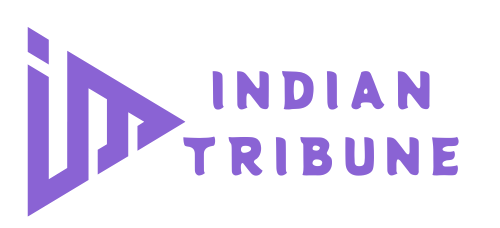Secure Access Service Edge (SASE) is a rapidly evolving framework that integrates networking and security services into a single cloud-native solution. As organizations continue to embrace remote work, cloud services, and edge computing, SASE has gained significant traction as a way to provide secure, seamless access to applications and data regardless of location. Here are some key trends in the SASE landscape:
1. Increased Adoption of SASE
- Accelerated Digital Transformation: The ongoing shift to remote work and cloud computing has driven many organizations to adopt SASE solutions for enhanced security and connectivity. Companies are increasingly prioritizing Secure access service edge (SASE) trends as part of their digital transformation strategies to ensure secure and efficient access to resources from any location.
- SMB and Mid-Market Uptake: Initially popular among large enterprises, SASE is now being adopted by small and medium-sized businesses (SMBs) and mid-market companies, who seek the security and agility that SASE offers without the complexity of traditional networking and security infrastructures.
2. Convergence of Networking and Security
- Integrated Solutions: The convergence of SD-WAN (Software-Defined Wide Area Networking) and security functions such as secure web gateways (SWG), cloud access security brokers (CASB), and zero trust network access (ZTNA) into a unified SASE framework is becoming a standard approach. This integration simplifies management, reduces costs, and enhances the security posture by providing a holistic view of the network.
- Zero Trust Architecture: The principle of Zero Trust, where trust is never assumed and access is granted based on continuous verification, is being embedded within SASE frameworks. This trend is driven by the need to secure access across increasingly distributed and decentralized environments.
3. Cloud-Native Security
- Cloud-First SASE Solutions: As organizations migrate to cloud services, there is a growing preference for SASE solutions that are cloud-native. These solutions are designed to operate efficiently in cloud environments, offering scalability, flexibility, and ease of deployment.
- Edge Computing Integration: With the rise of edge computing, SASE frameworks are increasingly being adapted to secure the edge of the network. This involves deploying security services closer to the user or device, thereby reducing latency and improving performance for critical applications.
4. Enhanced AI and ML Capabilities
- AI-Driven Security: Artificial intelligence (AI) and machine learning (ML) are being incorporated into SASE solutions to enhance threat detection, response, and automation. These technologies enable more proactive and adaptive security measures, identifying and mitigating threats in real-time.
- Behavioral Analytics: Advanced behavioral analytics powered by AI/ML are being used to monitor user and entity behavior, helping to detect anomalies and potential security threats before they can cause harm.
5. Vendor Consolidation and Ecosystem Expansion
- Vendor Partnerships: As the SASE market matures, there is a trend towards vendor consolidation, with larger companies acquiring or partnering with specialized security and networking firms to offer more comprehensive SASE solutions. This consolidation simplifies the SASE deployment for customers by reducing the number of vendors they need to manage.
- Expanding Ecosystems: Vendors are expanding their SASE ecosystems to include more third-party integrations, allowing customers to leverage existing tools and platforms within their SASE architecture. This trend supports flexibility and customization according to specific organizational needs.
6. Focus on User Experience
- Optimized Performance: SASE solutions are increasingly focusing on improving the user experience by optimizing performance through intelligent traffic routing, reducing latency, and ensuring consistent access to applications and data, regardless of user location.
- Simplified Management: As SASE solutions evolve, there is a strong emphasis on providing user-friendly management interfaces, dashboards, and automation tools that simplify the deployment and ongoing management of SASE environments.
7. Regulatory Compliance and Data Protection
- Data Sovereignty: With varying data protection regulations across different regions, SASE providers are increasingly offering solutions that comply with local data sovereignty requirements. This trend is particularly important for global organizations that must navigate complex regulatory landscapes.
- Enhanced Encryption: To meet stringent data protection standards, SASE solutions are incorporating advanced encryption methods to secure data both in transit and at rest, ensuring compliance with regulations like GDPR, CCPA, and others.
8. Managed SASE Services
- Outsourced SASE Management: As the complexity of SASE deployments grows, many organizations are turning to managed service providers (MSPs) to handle the implementation, management, and monitoring of their SASE environments. This trend is driven by the need for specialized expertise and the desire to focus on core business activities.
- SASE as a Service: The adoption of SASE-as-a-Service models is increasing, allowing organizations to consume SASE solutions on a subscription basis, thereby reducing upfront costs and enabling easier scalability.
9. Edge Security Evolution
- Protecting IoT Devices: As more devices connect to networks at the edge, SASE solutions are evolving to provide robust security for the Internet of Things (IoT). This includes securing communications between devices and cloud services, as well as protecting against vulnerabilities specific to IoT environments.
- Edge-to-Cloud Security: Organizations are seeking to secure the entire data flow from the edge to the cloud, ensuring that data remains protected across its entire lifecycle. SASE is being leveraged to provide consistent security policies and enforcement from the edge to the cloud.



